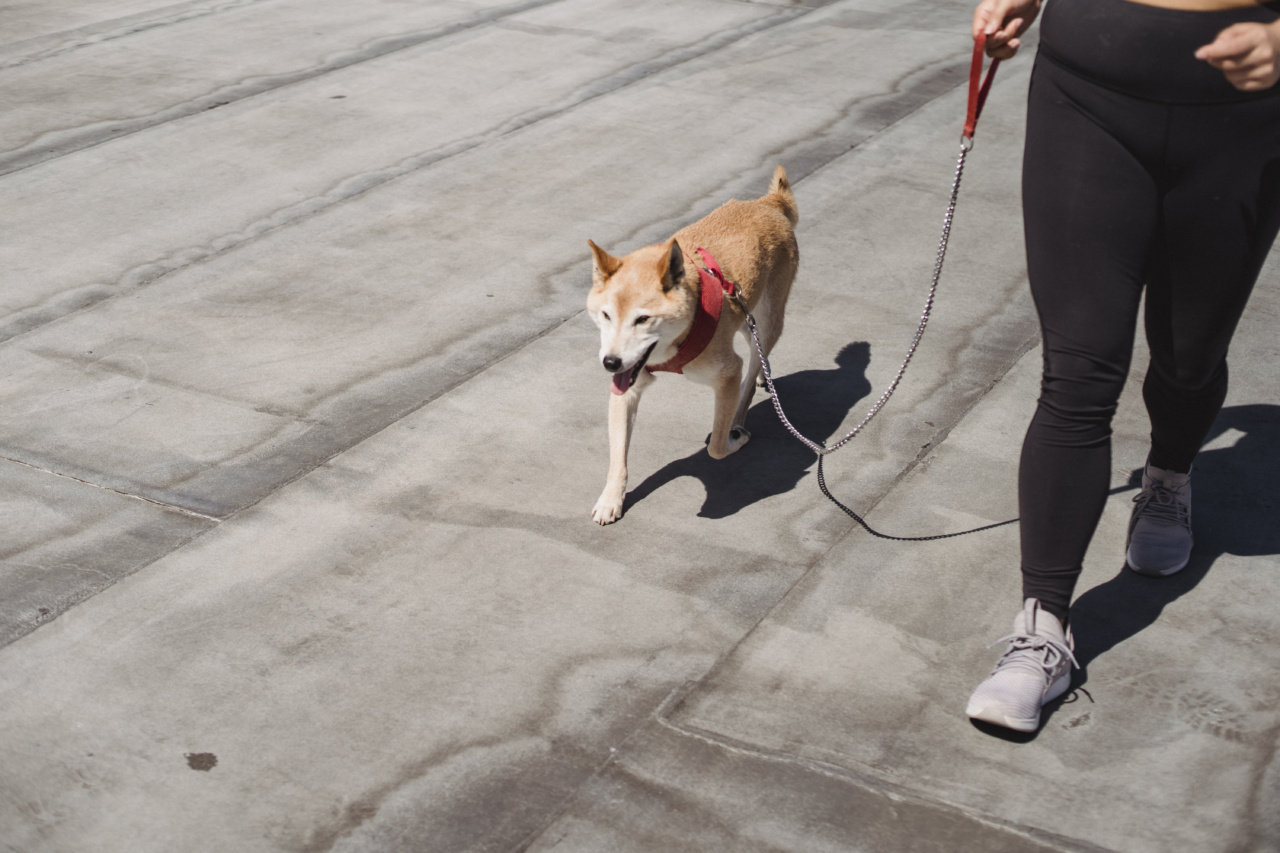Walking your dog should be an enjoyable experience for both you and your furry friend. However, if your dog constantly pulls on the leash during walks, it can quickly become a frustrating and exhausting ordeal.
Not only does pulling on the leash make your walks less pleasant, but it can also be dangerous for your dog and others around you. Fortunately, with some patience and consistent training, you can effectively teach your dog to walk politely by your side without pulling.
In this article, we will provide you with some helpful tips and techniques to stop your dog from pulling on the leash.
Understanding the Reasons Behind Leash Pulling
Before we discuss how to stop your dog from pulling on the leash, it’s important to understand why dogs engage in this behavior in the first place. Some common reasons include:.
- Excitement: Dogs are naturally curious and energetic creatures. They may pull on the leash out of excitement to explore their surroundings.
- Desire to Lead: Dogs have an instinctual need to lead, and pulling on the leash can be their attempt to take charge of the walk.
- Under-Stimulation: If your dog isn’t getting enough physical or mental exercise, they may become restless and pull on the leash as a way to release pent-up energy.
- Fear or Anxiety: Some dogs may pull on the leash when they feel scared or anxious in certain environments.
1. Start with Basic Obedience Training
Prior to addressing leash pulling specifically, it’s essential to establish a solid foundation of basic obedience training with your dog.
Teaching commands like “sit,” “stay,” and “heel” will create a strong bond between you and your dog, making it easier for them to understand and follow your instructions during walks.
2. Use Positive Reinforcement
Positive reinforcement is a highly effective training method that involves rewarding your dog for desirable behavior. When it comes to leash training, reward your dog with treats, praise, or petting when they walk calmly by your side.
This positive association will motivate your dog to continue behaving well on the leash.
3. Practice Loose Leash Walking
Loose leash walking refers to training your dog to walk without tension on the leash, keeping it slack instead. Follow these steps to teach your dog this skill:.
- Start in a quiet, distraction-free environment.
- Hold the leash with a firm grip but without tension.
- Begin walking slowly, and encourage your dog to stay next to you.
- If your dog starts to pull, stop walking and wait for them to come back to your side.
- When your dog returns to your side, reward them with treats and praise.
- Continue practicing in different environments with increasing distractions.
4. Use Redirection Techniques
Another effective technique to stop leash pulling is redirection. When your dog starts pulling on the leash, abruptly change direction, so they need to follow you. This method teaches your dog that pulling will not get them where they want to go.
5. Try Different Walking Equipment
Using the right walking equipment can make a significant difference in controlling leash pulling. Consider the following options:.
- Front-Attach Harness: These harnesses clip on the front of the dog’s chest, which redirects the dog’s forward movement when they pull.
- Head Collar: Head collars fit over a dog’s snout and provide control over their head, preventing them from pulling.
- No-Pull Harness: Designed specifically to discourage pulling, these harnesses distribute pressure evenly across the dog’s chest.
6. Be Consistent and Patient
Consistency is key when it comes to training your dog to stop pulling on the leash. Stick to the techniques and rules you establish and avoid confusing your dog with mixed signals. Remember to be patient, as leash training takes time and effort.
7. Seek Professional Help if Needed
If you’re struggling to stop your dog from pulling on the leash despite consistent training efforts, seeking professional help from a certified dog trainer or behaviorist can be beneficial.
They can assess your dog’s specific needs and provide guidance tailored to your situation.
8. Exercise Before Walks
A tired dog is generally a better-behaved dog. Prior to going on a walk, engage your dog in physical exercise or play to help drain their excess energy. This can significantly reduce the likelihood of leash pulling during the walk.
9. Gradually Expose Your Dog to Different Environments
If your dog pulls on the leash out of fear or anxiety in certain environments, it’s crucial to desensitize them to those surroundings.
Gradually expose your dog to new environments, starting with less challenging ones, and reward them for calm behavior.
10. Seek Positive Interactions with Other Dogs and Humans
Leash pulling can be exacerbated by dogs’ excitement or desire to socialize with others. Encourage positive interactions with other dogs and humans during walks, but ensure these encounters are controlled and calm.
Avoid situations that may trigger your dog to pull on the leash excessively.
























